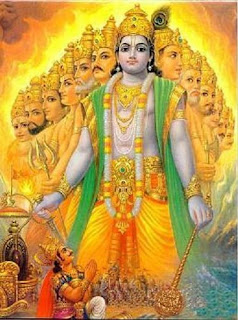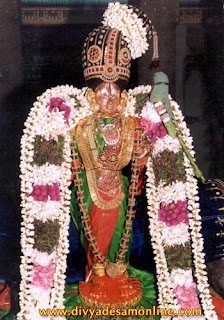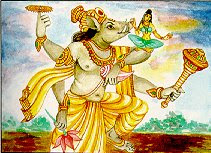In the wake of Srilankan army zeroing in on LTTE leader, the Congress party spokesperson, Veerappa Moily had asked for extradition of the LTTE chief, V. Prabhakaran so that he can be tried in India

Given the track record of the Congress party in handling convicts of grave offences, is this the latest addition in the list of persons to be shielded by the Congress party? Not long ago, the Minister of state for Home indicated how Murugan (one of the convicts in Rajiv case) was waiting to be pardoned. He is 5th in the Mercy list forwarded by the Government to the president. The Prime convict in Parliament attack, Afzal Guru is also waiting as the 28th person in the mercy list. Perhaps Prabhakaran will join this distinguished list as 38th or 40th once he is brought to India

The route to save him lies in trying his case in India
Is this the real intention behind Mioly’s concern for trying the LTTE chief in the Rajiv case? Is there any understanding like this with the DMK? Is that why the DMK is silent on Moily’s appeal for extradition?
- jayasree
An LTTE-Sonia family link?
S.Gurumurthy

Tuesday April 29 2008 09:35 IST
The LTTE suicide squad did plan and eliminate Rajiv Gandhi. But, why did the LTTE do it? Was there a larger conspiracy that extended beyond the LTTE as the strike force? Was the LTTE the author of the crime or the mercenary for some one else or for some purpose that yielded some benefit to it? These questions persisted even after the actual assassins were brought to book. The Narasimha Rao government appointed the Jain Commission to go into the conspiracy angle to the murder.
In its interim report the commission did exceedingly good work to bring on record evidence about the political forces involved in promoting the LTTE in Tamil Nadu that made the crime possible. Yet it made a mockery of its main work, the conspiracy angle. It floated dubious and wild theories, involving Mossad! CIA! Besides adding confusion, it ended up trivialising a very serious exercise. This also robbed the commission of its credibility.As the commission's final report proved a flop, the Vajpayee government appointed a Multi- Disciplinary Monitoring Agency (MDMA) in 1998 to unearth the conspiracy angle.
But the person who first demanded, but, ultimately made, investigation into the conspiracy to murder Rajiv Gandhi irrelevant was none other than his widow Sonia Gandhi. Her attitude to the investigation and suspected actors in the murder dramatically changed. Her conduct in 1997 when she was working to enter active politics was a stark contrast to her attitude after taking over the congress leadership on the Jain Commission issue.
In 1997, she demanded that the DMK which, the Jain commission had said, was part of the conspiracy, be sacked as a partner of the UF alliance and pulled down the government when the demand was not met. Her party insisted the entire facts about the conspiracy be investigated and revealed.
Addressing a meeting at Amethi, Sonia hinted that the DMK was a fan of the LTTE and charged that those who doubted the Jain commission report were diverting the attention from the investigation into the conspiracy to murder Rajiv and demanded that the probe be completed expeditiously (Indian Express 2.2.1998). But, once she took over the party leadership, she not only ceased to evince any interest in pursuing the Rajiv Gandhi murder conspiracy, but also began allying with the alleged conspirators themselves. The developments, put together, reveal a shocking picture.
The year after taking over the Congress, Sonia Gandhi makes a secret move. In the year 1999, she told then President Dr K R Narayanan privately that 'neither she nor her son and daughter wanted any of the four convicts' sentenced to death for Rajiv's assassination 'to be hanged', and pleaded that no child should be orphaned by an act of the State. Noted the Indian Express (Nov 20, 1999) that before her plea for mercy to the Rajiv killers the Congress party was the leading opponent of mercy to them. This silenced the party once and for all. What transpired at her private meeting with the President was revealed not by Sonia, but by Mohini Giri (the former chairperson of the National Women's Commission) and on that basis Nalini's death sentence was commuted to life. (Frontline Nov 5-18, 2005).

Then, in February 2004, there were reports, editorially commented by the Island newspaper in Colombo on Feb 20, 2004, that Eduardo Faleiro, her emissary, had a secret meeting with the LTTE chief Prabhakaran at Killinochi. Island had also referred to reports that Sonia's mother Ms Paula Maino had met Anton Balasingham, LTTE's point man in London, in connection with the electoral alliance between the DMK and the Congress. While Eduardo Faleiro at least made a feeble attempt to deny the meeting, Paulo Maino would not even deny that.
Third, the Paulo Maino meeting preceded, and the Faleiro meeting succeeded, the unbelievable U-turn of Sonia Gandhi to forge alliance with the DMK which was accused by her own party in 1997 of being part of the conspiracy to murder her husband. The DMK-Congress alliance seems to have been agreed upon sometime in December 2003. In January 2004, Sonia met the DMK chief and concretised the alliance. The coming together of one of the alleged conspirators and the victim of the conspiracy made a mockery of any further investigation into Rajiv Gandhi murder. For the last four years there is not a single word spoken by Sonia on pursuing the Rajiv Gandhi murderers and on unearthing the conspiracy or for the extradition of Prabhakaran or Pottu Amman.
This is despite the fact that, when, on April 10, 2002, Prabhakaran met the press at Killinochi, he did not even deny that LTTE was involved in Rajiv assassination. Fourth, the LTTE too responded favourably to signals from Sonia that she was not against LTTE. On January 27, 2006, Anton Balasingham, told an Indian TV news channel that the Rajiv killing was 'monumental tragedy' and asked the people of India to be 'magnanimous to put the past behind' and deal with the LTTE.
Fifth, Sonia did not object to the inclusion of the DMK woman MP in whose house Sivarasan the main killer of Rajiv Gandhi had stayed for which she was detained under the TADA, as a minister in the UPA government. Sixth, the MDMA which was appointed by the NDA government after Sonia rejected the Action Taken Report on the Jain Commission, has virtually become defunct under the UPA regime. Since 2004, she has not uttered a single word asking what the MDMA is doing. And finally now in March 2008, Priyanka Vadra, Sonia's daughter makes a secret visit to Vellore jail and meets the first accused in the murder of Rajiv, for over an hour.
Media reports say that they sat by each other's side, cried and professed goodwill towards each other! No one knows what transpired between them. The meeting clearly illegal, looks almost a conspiracy, would have remained a secret had the media not exposed it. Priyanka said that neither Sonia nor Rahul or Priyanka believe in hate or anger, and that the visit was her way of coming to terms with the Rajiv Gandhi murder.
Moral high ground seems to be a cover for undisclosed political strategies. But where was this high moral ground when Sonia angrily pulled down the UF government on the ground that DMK, a suspected co-conspirator with LTTE, was part of the alliance? Is Rajiv Gandhi's assassination a personal affair between the Sonia Gandhi family and the LTTE for the former to punish or pardon the latter? LTTE has neither confessed nor regretted its action for the Gandhis to pardon. The LTTE is even today unrepenting.
The prosecution case is that the LTTE supremo decided to avenge Rajiv Gandhi for sending IPKF to Sri Lanka and betraying the LTTE. But that was no personal decision of Rajiv Gandhi. The assassination was an act against the state of India.
This is how it should be seen and pursued. Neither Sonia nor Priyanka nor the Congress has the right to pardon the criminals who have challenged the sovereignty of India.
http://www.newindpress.com/NewsItems.asp?ID=IEM20080428231348&Title=Main+Article&rLink=0









